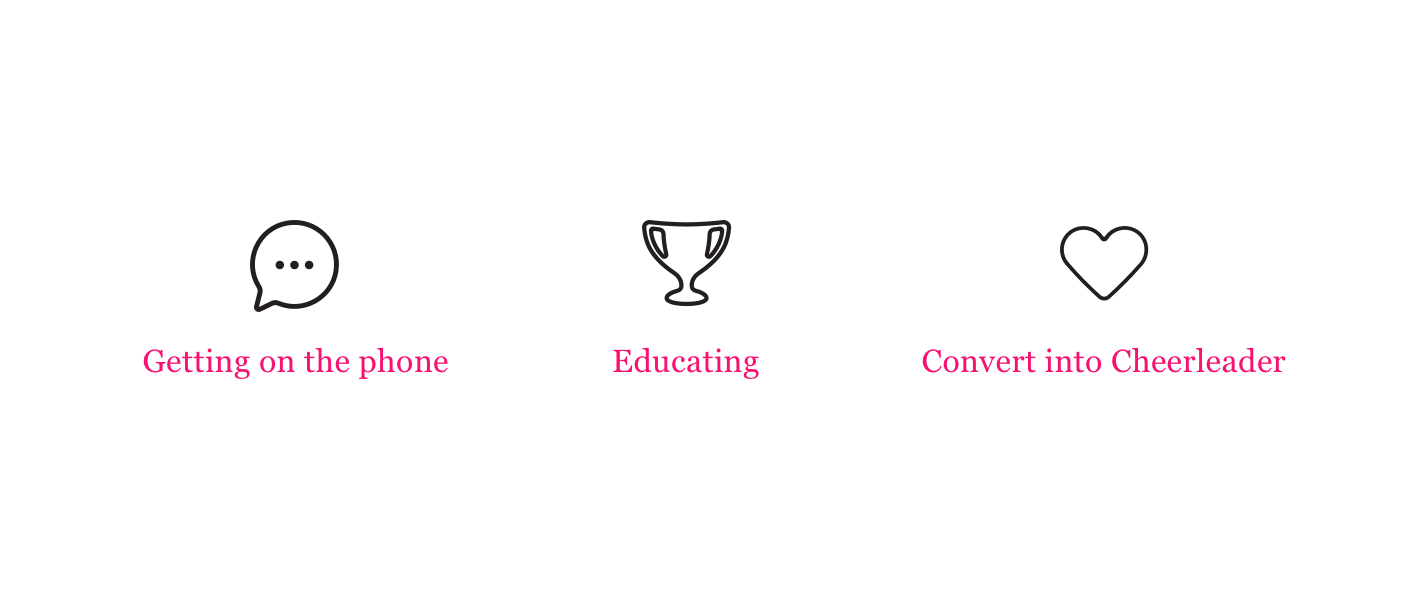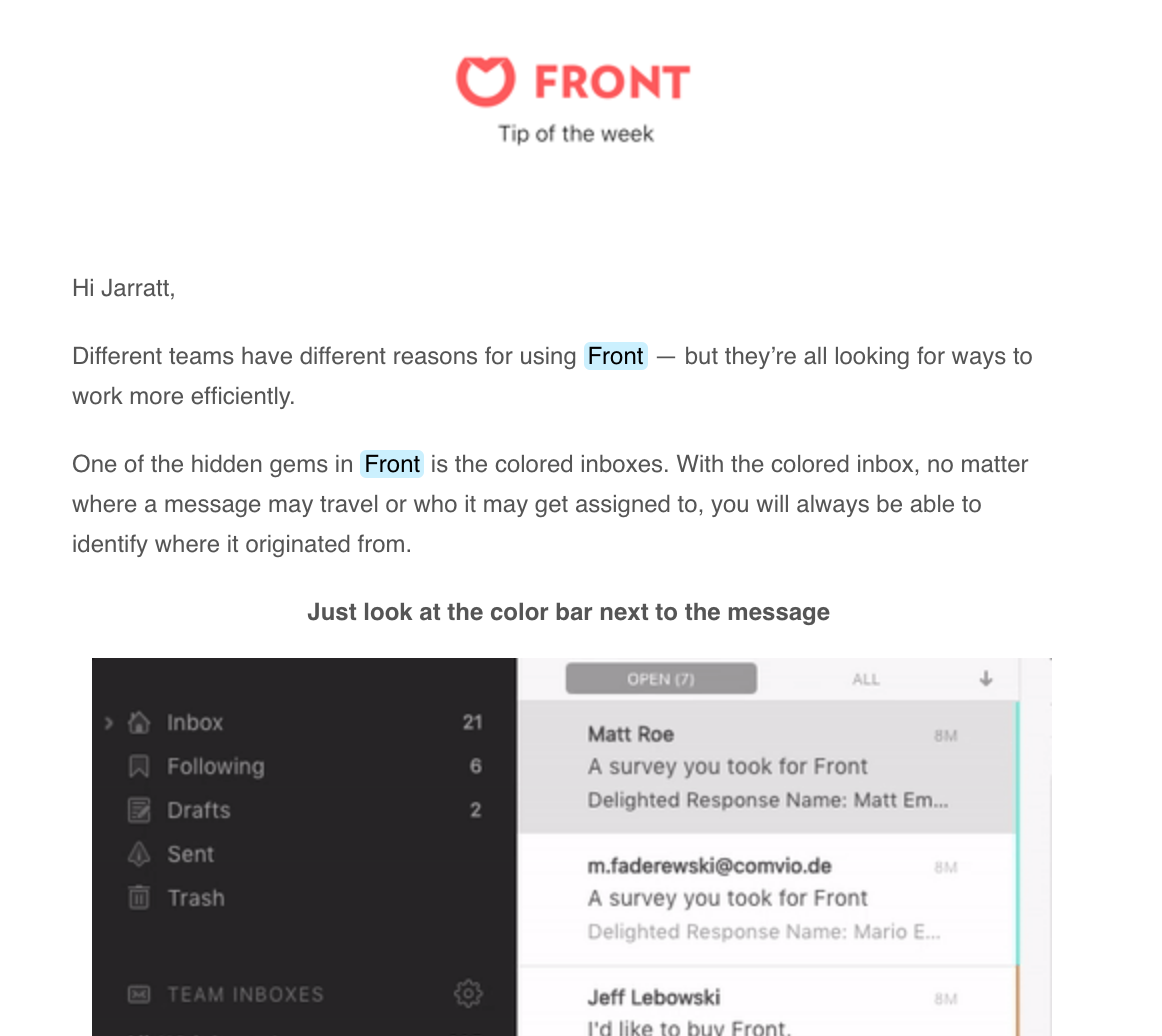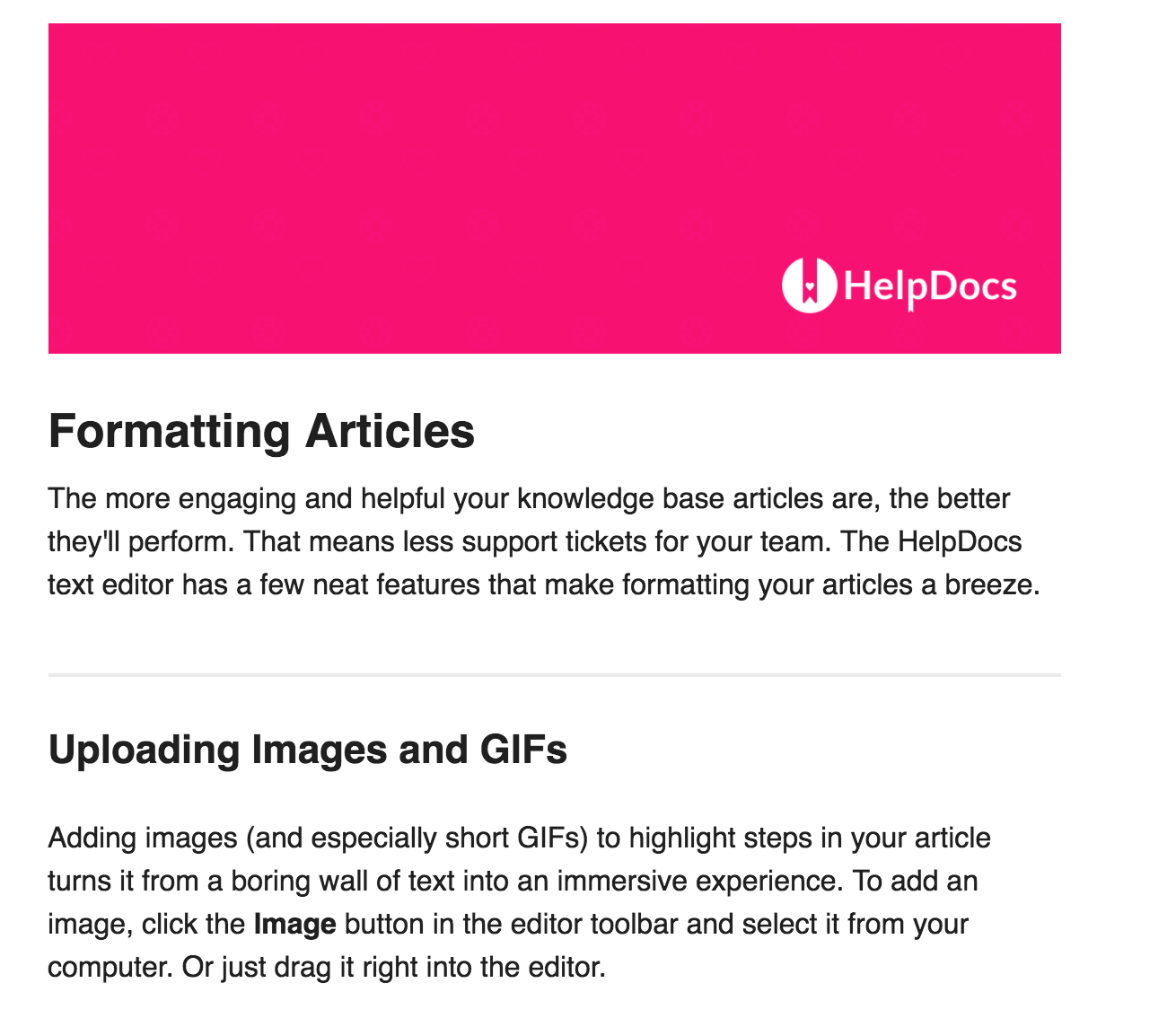
We've been putting off building an onboarding sequence for a little while now, mainly because we were worried it would be a gigantic time-sink.
There are loads of ways to optimize onboarding email sequences and it can easily get out of hand. 🙁
What should we include to engage our trial users? Should the emails be beautiful or plain? What's the best subject line to increase our open rates?!
All these questions should be totally ignored if you don't have any sequence set up. Yup, that's right. Don't try to optimize anything. Not yet.
In this guide, it'll go through how to decide what the heck your emails will be about, which email tool to pick based on your goals, how to decide what to write, and finally, how to order them correctly.
Time to think about the goal of your emails
Earlier this week, we finally bit the bullet and started to think about how to create our own onboarding emails.
We're getting a good amount of organic leads and it seemed like a missed opportunity to not guide them through some of the features we have on HelpDocs.
I'm particularly proud of the snazzy lists and sweet callouts we made for our users to use in their docs. Trouble was, our users weren't using them. Like, ever. 😔
This turns out to be a huge problem for a lot of SaaS companies. They put the time and money in to build neat features, but they get left to go unnoticed. Bummer.
One way to increase adoption of said features is to educate users about them. They may end up ignoring them still, but at least you tried, right?
We knew it was our fault that nobody had used some of the extras we provide. We never told anyone, nor did they find them as they're sometimes buried.
Before going any further, think about what it is you want your users to do with these emails. There's absolutely zero point in making them if they serve no purpose.
Here's some common goals for onboarding emails:
- Getting on a call. Particularly when your product is relatively new, it can be useful to get trial signups on the phone to talk about what they like, don't like, and if it's the right product for them.
- Educating. Some products are mind-bogglingly complex, others a super simple. Either way, you'll likely need to educate your users by showing them how to use your product and get the most out of it.
- Push to become a cheerleader. Sometimes it's best to push your trial signups to become cheerleaders of your product. People who'll read your blog, sign up to your newsletter, and recommend it to friends. When they're ready, they'll convert themselves.

Got your goal in place? Good. Next, I'll guide you through how to choose the best tool for your onboarding emails. You'll be converting more users in no time.
Choosing the right tool for the job
Ah, choosing the right product. It's tough for a startup founder to not browse for hours upon hours. There's always another service to look at.
Before looking at the options, it's good to know what you want out of a solution. Does it need to be cheap? Advanced? Easy to use?
These are the things we wanted from our software:
- It needed to be a reasonable price. We're a self-funded startup, so we couldn't go throwing money around finding a good solution. It had to be a good price for us (preferably < $20/m).
- Quick setup. It's all too easy to spend days on getting a tool set up just right. We didn't need just right—we needed quick.
I've included a list of common marketing/product email providers below so you don't have to go Googling for ages:
| Software | Pros | Cons | Starts at |
|---|---|---|---|
| MailChimp | - Pre-built automation workflows - Drag & drop editor |
- Difficult to replicate plain-text email - Support isn't great |
$10/m |
| Customer.io | - Specifically for onboarding email sequences - Advanced filtering |
- Need to use HTML to create custom template | $100/m |
| Vero | - Created specifically for onboarding email sequences - Super advanced filtering and workflow management |
- Not good for marketers—dev focused |
$99/m |
| Drip | - Easy-to-use workflow editor - Lots of integrations - Advanced filters & workflows |
- Plain text emails only | $49/m |
Now, I've listed just a few. If you want to delve in even further, Marcus Taylor over at VentureHarbour goes into great detail here.
In the end, we decided to go with MailChimp. They have a pretty awesome automation template for just $10/m, so it was quick & cheap.

Maybe as we grow we'll switch for advanced features, but for starters, MailChimp seemed like a great choice. If you're further along than us and you wanna get advanced, it might be best to pick something else.
Ok. So you should've decided what your emails are for, and which tool you're going to use. Done that? Great! Let's decide on the content.
Deciding on the content
Now that we'd chosen our tool of choice, it was time to decide what the heck we were going to put in the sequence. Which was actually harder than it seemed.
For you, it'll depend on your goal.
Some onboarding emails push to get you on a call right away, others at the end of the sequence. Some guide you through features step-by-step, whereas others give you quick tips every now and then.
Check out this neat one from Andersen over at Front. They share a new tip (with text and a sweet GIF) each week to help customers get the most out of their software:

Our main problem was users not finding out about the extra features we'd created for them. So, it made sense to split out our onboarding sequence based on some not-so-obvious features.
If your main goal is to get users onto a call with you, it might be best to give them a few tips and then ask them if they need anything.
Getting your emails in order
The next problem will be ordering your onboarding emails.
For ours, we didn't want to immediately bombard them with an email along the lines of 'HEY? DID YA KNOW YOU CAN USE JAVASCRIPT?! 🤓' on the first day.
Man, that would scare anyone off, so try not to do that with yours. If you have advanced features in your app the majority of your users won't use, put emails about those off until last.
Similarly, if you're looking to get a user on a call, leave it until last. Send a few helpful emails beforehand.
We put ourselves in our users' shoes.
What would we want to know first? What might we be interested in doing on the first day, the second, and so on. That can be an easy way to order your emails.
Well, the first thing we'd wanna do is customize it to suit our brand. So that's what we sent off first: 'Customizing Your HelpDocs'.
After that, it was pretty obvious where to put stuff. The JavaScript email had to go last, for sure. Here's the list we ended up with:
- Customizing Your HelpDocs. All about uploading your logo, choosing a brand color, and choosing a layout.
- Formatting Articles. We were keen to share the formatting options ASAP. By the second day, it's likely they've written their first article.
- Integrating with Other Services. We love integrating with other services because it means we fit snuggly into our users' workflow. In this email, we highlight all the apps we connect up to.
- Understanding Stats. Once our users had some stats racked up, we wanted to highlight them.
- Setting up a Custom Domain. This was a tricky one to place. The user needed to be committed enough to bother setting this up, but it's a pretty important step. We decided to send it before the end of the week.
- Inviting Your Team. Whilst we do encourage our users to invite their team right away, we understand they might not be ready.
- Getting Started with Internal Docs. It made sense to add this after inviting your team. Internal docs are all about creating docs for everyone in the company.
- Advanced Customization. As to not scare anyone off, we added this to the end. CSS, JavaScript & HTML isn't everybody's cup of tea. ☕️

We're happy with it. Over the first eight days, our users get to see what they're missing out on. There's always the benefit that an inactive user may come back during their trial, too.
Depending on your trial period (if you have one at all) you might like to space yours out differently. We've just gone for 1 a day for 8 days.
Keep an eye out on your open rates. They're inevitably going to start to decrease as you send out more—just be alert for any that have < 5% open rate. They're bad eggs.
Looking towards optimization
It's only been a few days and we're already finding out onboarding emails get a 50%+ open rate, which isn't awful for a first go.
We'll have to keep an eye on the stats and see whether they help increase active trial users and boost adoption rates of our not so obvious features.
There's a ton of resources to learn about how to optimize your onboarding emails, once you've got the basics sorted. Here's just a few I've skimmed through:
How to send SaaS onboarding emails without being a nag
The Secret to Successful Customer Onboarding
So there we have it, an onboarding email sequence how-to. Hopefully, you've got some emails setup and ready to go. The bulk of our time spent was writing the emails.
Here's a recap on what to do:
- What are you hoping to achieve? Before you start messing around with templates, think about what it is you're trying to get users to accomplish. I've had onboarding emails that have served no purpose. Choose a purpose.
- Find the right tool for you. Look, MailChimp ain't for everyone. Drip, Customer.io, Vero, SendGrid. They're all neat. Find the one that suits you.
- Order up. It might seem like the order doesn't matter, but it sure does. Pretend to be your user and make sure you'd at least maybe open and read the email.
- Optimize later. Stop reading about making them sparkling. To start, you just need something there.
I'd love to know if you've got any tips on optimizing your product onboarding emails! Lemme know in the comments. 🙃